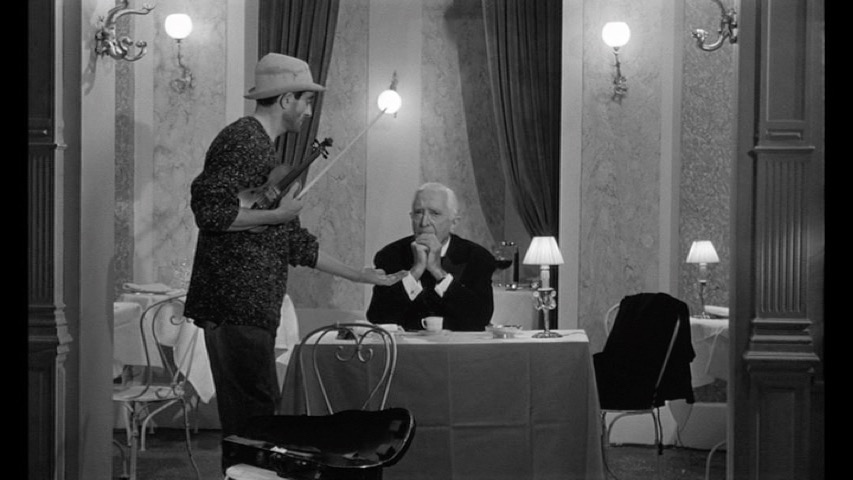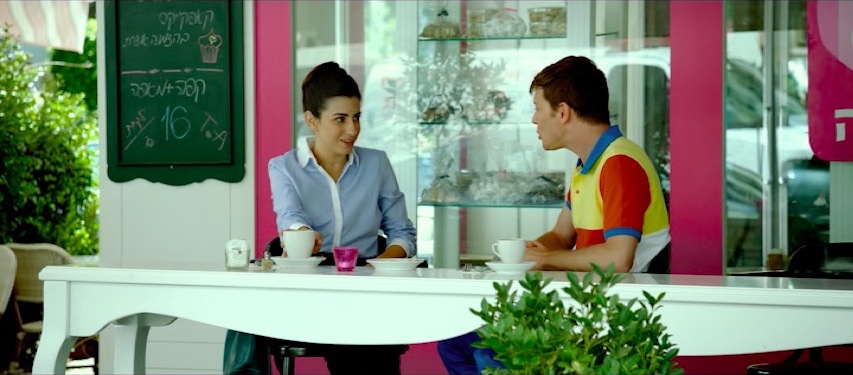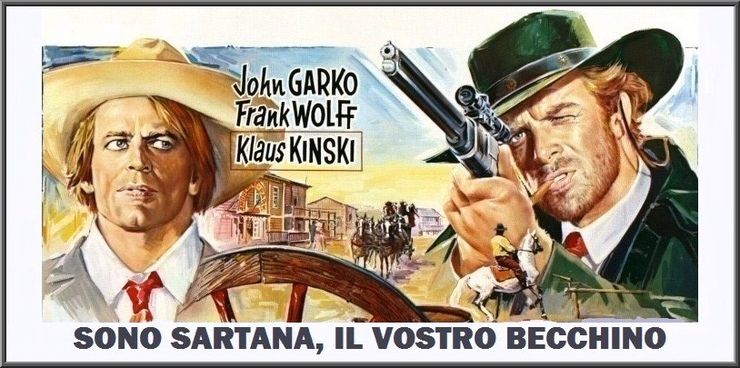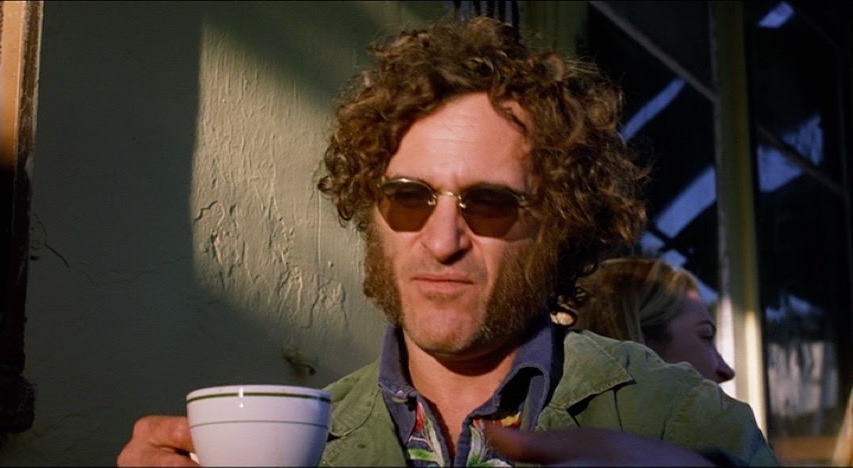« June 2018 | Main | August 2018 »
July 31, 2018
Lou Andreas-Salome: The Audacity to be Free

Cordula Kablitz-Post - 2016
Cinema Libre Studio R1 DVD
This is an intimate biography of a woman perhaps more famous now for her various liaisons than for her novels or philosophical works. The film jumps between two threads, of Andreas-Salome narrating her memoirs to the man who would eventually save her surviving writings, and the years between childhood in St. Petersburg, Russia, and her first meetings with Sigmund Freud. What would be the film's present tense is in the immediate aftermath of Hitler's book burning and ban on art and literature deemed decadent, as well as the practice of psychoanalysis in 1933. The past is primarily the last quarter of the 19th Century, with the restrictive Russian childhood giving way to a more free form existence primarily in Germany, as Andreas-Salome has varying relationships with Rainer Maria Rilke and Friedrich Nietzsche, as well as less famous men.
I am unable to vouch for the historical veracity of the film, but counting on absolute accuracy in any biographical film is a foolish endeavor. What is probably of greater interest is of how Andreas-Salome lived her life as much on her own terms as possible. This meant her choice of being in committed, though platonic relationships with some men, while sexually involved with others. The film shows how Andreas-Salome navigated through the various social and familial expectations that were placed on her, as well as how her writings inspired both men and women regarding a woman's role in society.
Kablitz-Post does make the interesting choice of establishing several of the film's settings by inserting her characters in period postcards. Less successful for me is the literal representation of God as seen in a childhood memory, with fluffy white hair and long beard. Perhaps it can be argued that this is how a child might imagine God, yet it strikes me as problematic considering that Andreas-Salome spent her life questioning various aspects of Christianity, even as a child. There is also a scene where the very earnest Rilke, now a successful poet, tries to woo his muse by telling her that he can not sleep, breathe or basically exist without her as a permanent part of his life. I was ready for Rilke to burst into song with the old Barry Manilow hit, "Can't Smile without You".
The home video version comes with an interview with Kablitz-Post. This is her first narrative film following several documentaries, primarily for German television. I'm intrigued that one of Kablitz-Post's previous films is about the iconic German New Wave star, Nina Hagen, although others, I am certain, would be eager to see the documentary on actor Helmut Berger.
Posted by Peter Nellhaus at 10:09 AM
July 29, 2018
Coffee Break

Pierre Etaix and an unidentified actor in Yoyo (Pierre Etaix - 1965)
Posted by Peter Nellhaus at 09:07 AM
July 22, 2018
Coffee Break

Salma Hayek and Eduardo Casanova in As Luck would have It (Alex de la Iglesias - 2011)
Posted by Peter Nellhaus at 09:09 AM
July 17, 2018
I Walk Alone

Byron Haskin - 1947
KL Studio Classics BD Region A
The movie that I like to retitle, "When Burt met Kirk". This marked the first pairing of the two actors, the fourth film for both. The difference is that Burt Lancaster had already achieved star billing in his second role, while Kirk Douglas was still considered a supporting player. In his commentary track, Troy Howarth mentions the friendship between the two actors, but the nature of their personal relationship is open to some debate as discussed in Kate Buford's biography.
Burt Lancaster, seemingly ready to burst out of his suit, plays the ex-con, free after fourteen years, ready to rejoin former bootlegging partner Kirk Douglas. Lancaster expects that Douglas will still keep the agreement they made when they last saw each other regarding sharing any wealth. Douglas has gone legit, from running a low-rent speakeasy to now owning a high class night club. The film takes plays over the course of one very long night.
Haskin's film is not considered part of the canon, but for someone unfamiliar with film noir, there are two scenes that serve as perfect illustrations. The accountant of a nightclub, played by Wendell Corey, has walked out on boss Douglas. He realizes that he is being followed by a hitman. Just prior to that moment, Corey is seen in a dimly lit drug store phone booth, desperately trying to contact Lancaster. Sneaking out the back way, Corey walks, then runs down the street, framed in an overhead dolly shot at a slight diagonal angle. He is being followed by the elongated shadow of the hit man. Corey is off-screen, to the right of the camera when gunfire is heard. The dolly shot continues moving to the right, with the sidewalk lit with the light of a store across the street, the store letters seen on the sidewalk, a trail of drops of blood, stopping on Corey's dead body.
Following that scene, Lancaster and Lizabeth Scott confront Kirk Douglas at his New Jersey mansion. Douglas seems to have control with the gun at hand. A desk lamp is knocked over. Douglas is seen in silhouette, with only moonlight, shooting in the direction of Lancaster's voice. Lancaster and Scott are barely visible, hiding in the shadows, counting until Douglas is out of bullets.
I Walk Alone was Haskin's first directorial credit in twenty years. Starting as a silent era cinematographer, he also directed four now lost silent films around 1927. Going back to cinematography and special effects, with uncredited direction on Action in the North Atlantic, Haskin worked for producer Hal Wallis on several films when both were at Warner Brothers. How much of the visual expressiveness should be credited to Haskin, I can't really say, although in retrospect, I Walk Alone could almost pass for a Warner Brothers movie. The handful of films I've seen by Haskin also indicate some thematic continuity in the corrupting nature of self-perceived power with The Boss, with a screenplay by an uncredited Dalton Trumbo, The Naked Jungle and Haskin's last theatrical film, The Power.
New York Times film critic Bosley Crowthers took time to be a public scold in his review, noting, "It is notable that the slant of sympathy is very strong toward the mug who did the 'stretch,' as though he were some kind of martyr. Nice thing! Producer Hal Wallis should read the Code." Burt Lancaster was hardly the first actor to play an ex-con who the audience would root for. Pushing the production code a bit more was the presentation of Douglas' open relationship between his night club's chanteuse played by Scott, and the socialite played by Kristine Miller, who is also open about her flings. I Walk Alone is visually dynamic, but keep the ears open for the still charged sexual banter.

Posted by Peter Nellhaus at 10:00 AM
July 15, 2018
Coffee Break

Dana Ivgy and Ofer Shechter in Cupcakes (Eytan Fox - 2013)
Posted by Peter Nellhaus at 08:41 AM
July 10, 2018
A Double Face

A Doppia Faccia / Liz et Helen
Riccardo Freda - 1969
Another visit to a film seen as a grey market DVD, although I just found out it is currently available on Amazon Prime. The version I saw was the French language version of Freda's film, signed under his pseudonym of Robert Hampton. Visually, this looks like a dub made from a video tape, lacking in some detail and accurate color. I passed on getting this on what may well have been a better version about ten years ago, but I'm OK with that.
Not a horror film, but there are moments that will remind those familiar with Freda's better known work. John Alexander meets Helen Brown, daughter of a wealthy businessman, at a ski resort. The two get married, and John gets to work for Helen's father. John and Helen's relationship is uneasy when John sees his wife sharing bath time with Liz. Helen talks John out of getting a divorce, reminding him that even though he works for her father, Helen owns most of the company stock, a fortune that John would inherit should Helen die. And indeed, Helen is the victim when someone plants an incendiary device in her car.
And like several other Freda movies, is the victim truly dead? A mysterious woman, Christine, shows up at John's house, playing Helen's favorite song on a tape recorder. At a warehouse party, Christine takes John to the makeshift theater showing a film with Christine having an encounter with a woman, nude, with an oversized necklace, and for John, a familiar ring on one hand, and scar on the back of her neck. The face is obscured by a large black hat with thick black veil.
The scene where John discovers Christine begins with a shot of Klaus Kinski as John walking up the stairs of his dark mansion, carrying a lit candelabra. The camera is tilted down from second floor so Kinski is seeing initially at the bottom of the steps. It's an image not dissimilar from Freda's other gothic films. A Double Face isn't a horror film, but there a times when it seems like it could be with just a bit of tweaking. And the scene with the big reveal at the end is that other major moment that recalls that Freda made Italy's first contemporary horror film almost ten years earlier.
John buys the film of Christine and the mystery woman, watching it alone, reviewing and rewinding the footage that appears to provide clues to the woman's identity. The next day, John watches the movie with his father-in-law. The movie looks exactly the same, except the woman in question is not wearing a ring, nor does she have a scar on her neck. And aside from being a narrative plot point, the scene could well be read as an observation on film viewing and memory. I know for myself there have have been moments or entire scenes that I was certain were part of a film that turn out not to be there when I revisit the film in question.
What also makes this film unusual is seeing Kinski as an uncharacteristically meek man, easily acquiescing to his wife, seemingly helpless when his father-in-law tells him to take responsibility for the business. The other bright spot is the score by Nora Orlandi, credited her as Joan Christian. Orlandi only has a few film scores to her credit, and much of this is piano based based, thundering and dramatic before moving to a more romantic musical theme. Orlandi started her career writing and singing pop songs, and this film has "Non Dirmi Una Bugia" which translates as "Don't tell me lies". Even though Freda did not think much of A Double Face, it's a film worthy of greater consideration.

Posted by Peter Nellhaus at 08:26 AM
July 08, 2018
Coffee Break

Thomas Mitchell and Lester Allan in The Dark Mirror (Robert Siodmak - 1946)
Posted by Peter Nellhaus at 09:05 AM
July 03, 2018
The Complete Sartana

If You Meet Sartana . . . Pray for Your Death/ Se incontri Sartana prega per la tua morte
Gianfranco Parolini - 1968
I am Sartana, Your Angel of Death / Sono Sartana, il vostro becchino
Giuliano Carnimeo - 1969
Sartana's Here . . . Trade Your Pistol for a Coffin / C'e Sartana . . . vendi la pistola e comprati la bara
Giuliano Carnimeo - 1970
Have a Good Funeral My Friend . . . Sartana will Pay / Buon funerale, amigos! . . . paga Sartana
Giuliano Carnimeo - 1970
Light the Fuse . . . Sartana is Coming / Una nuvola di polvere . . .un grido di morte . . . arriva Sartana
Giuliano Carnimeo - 1970
Arrow Video BD Regions A/B Five-disc set
First, a bit of clarification might be needed. The five films in the package are considered the true Sartana films. I don't know how the various producers came to agreements, but it should be pointed out that none of the films here are any of the dozen or so productions where Sartana is just a name in the title, a lure for the less discerning viewer. Whatever minor inconsistencies may be found in the five films listed above, aside from the name, there is the costume of a black suit with cape, the custom made pistol with four barrels, the use of gadgets not entirely implausible for the time the films take place, and the profession of bounty hunter and gambler. Not to mention the unwieldy titles in the series. The stories can generally be boiled down to the question: who's got the gold? Further inconsistency, perhaps unavoidable, is that some of the films are better than others, but all are undeniably entertaining. The Arrow set is loaded with supplements, primarily fairly lengthy interviews with several surviving members of the cast and crew.
I would even suggest watching one of the supplements from the first disc prior to checking into the films. There is a overview of the various actors, several of whom are seen in two or more of the films, with brief biographical information. Aside from the two Sartanas, Gianni Garko and George Hilton, there are the featured actresses, such as Erika Blanc and Susan Scott (Nieves Navarro). The elfin Franco Pesce is usually cast as the town undertaker, with an English language voice reminiscent of Walter Brennan. (And if you're asking who Walter Brennan is, than you need to stop what you're doing and see Rio Bravo.) And as far as I'm concerned, Fernando Sancho was born to play corrupt Mexican generals. Viewers may have their own favorites, but this supplement helps put names and faces together, and help recognizes some of the supporting players not only in the Sartana films but also Italian genre cinema.

The first film, If You Meet Sartana . . . , is for me the best of the series. The template for the series is established with the double-crosses, triple-crosses, corrupt law enforcement, bandit gangs, and questionable women. Invariably, the worst of the villains is the richest guy in town. But what also makes for great entertainment in the first film is having Garko competing against Klaus Kinski, nutty, and William Berger, nuttier, whether gambling or fighting for the hidden gold. Berger is especially manic, sniffing what I assume to be cocaine out of a little silver box, or getting unhinged at the sound of the music emanating from a pocket watch. No explanation is given about that watch within the story, and I'm sure no one who made the film was concerned that this bit of business was lifted from For a Few Dollars More. Additionally, this is visually the strongest film film in the series. Parolini, who signed this film as Frank Kramer, often emphasizes space within the frame with something large in the foreground as part of a full shot of the setting in question, whether it's the barrel of a rifle, or an actor, usually Garko, seen in close-up on the side of the widescreen frame.
Carnimeo is a good craftsman, who on a couple of films will have the camera tilt when characters are shot in a gunfight scene. One nice bit of creativity is when Sartana has a gunfight against an outlaw trio, each standing in a different part of a cantina, and the film cuts to a triptych of the three falling to their respective deaths. For those who are sticklers for historical veracity or even simple consistency, Carnimeo's films may prove frustrating as some of the props and costumes indicate knowledge that there was the American Civil War, but a vagueness about when it happened. Also, Carnimeo's pseudonym of Anthony Ascot has at least two other spelling variations.
Sartana's Here . . . is worth noting for having a character named Sabata, or Sabbath in the English language track, unrelated to the Sabata of the films directed by Parolini. Played by the blond Charles Southwood, this Sartana is a well-dressed dandy who rides around with a parasol, taking time between gunfights to read Shakespeare. That parasol bit presumably was inspired by Tony Anthony's character known as the Stranger. Hilton makes a credible replacement for Garko, and could have easily continued the series himself.
Sartana Will Pay has a screenplay that is largely the work of the prolific Ernesto Gastaldi, best known for his work with Sergio Martino. There's a touch of giallo with a character tortured by having acid poured on him. Not quite Rashomon as Sartana tries to discern which tale of betrayal is true. The gimmickry gets pushed here, especially at the end. There is a particularly funny running gag concerning the self-proclaimed "best shot in the West".
Gastaldi has two interviews here, and those familiar with his contributions on NoShame's disc know he's a great raconteur. Wide eyed Erika Blanc also shares her memories of working in Italian cinema. There is a recent interview with George Hilton, and an older interview with Gianni Garko together with Carnimeo. The interview with Gianfranco Parolini was probably his last, he died last April. The films can be seen either with Italian or English dialogue tracks. Keep in mind that the films were made when post-dubbing was the normal procedure for these European co-productions, and as Erika Blanc notes, even in Italian the viewer does not necessarily hear the voice of the actor in front of the camera.
Posted by Peter Nellhaus at 08:45 AM
July 01, 2018
Coffee Break

Joaquin Phoenix in Inherent Vice (Paul Thomas Anderson - 2014)
Posted by Peter Nellhaus at 10:14 AM
